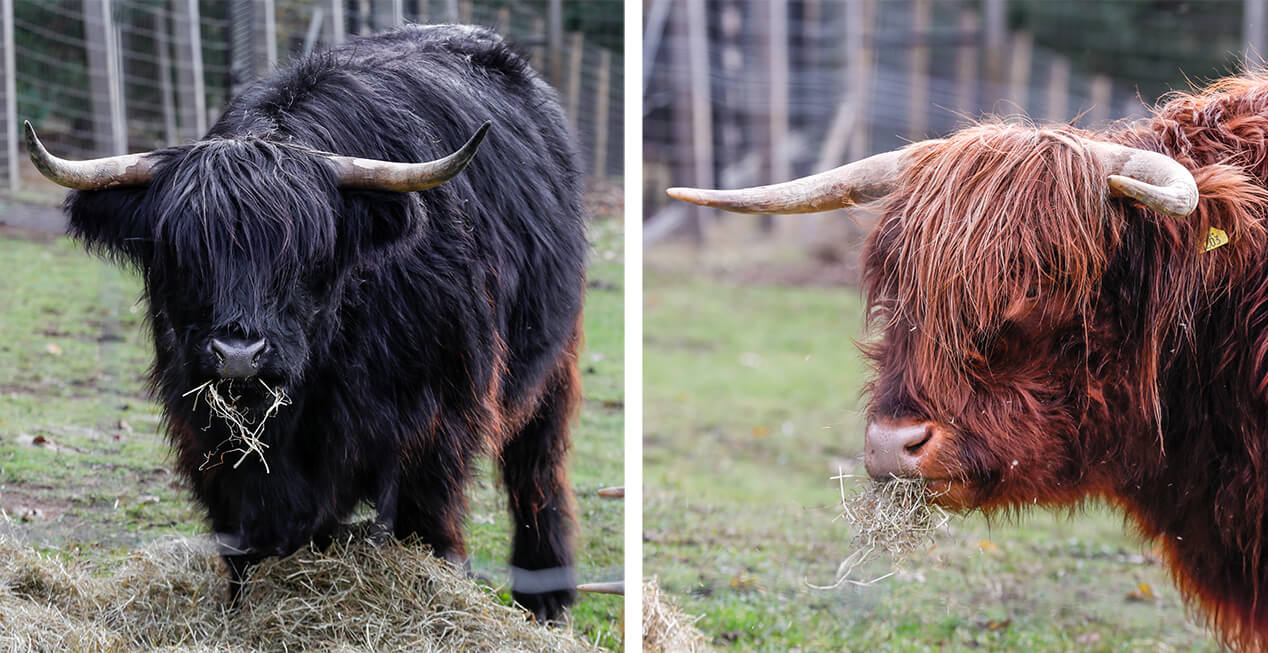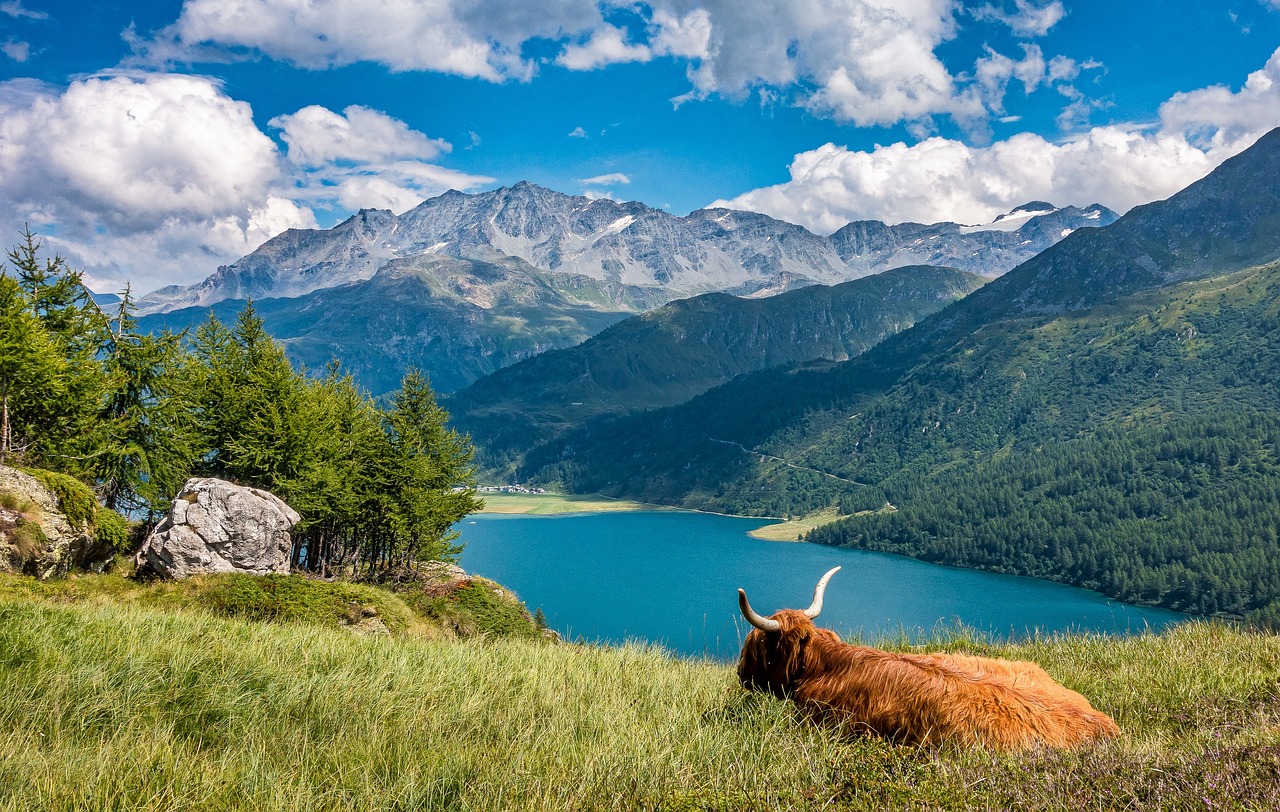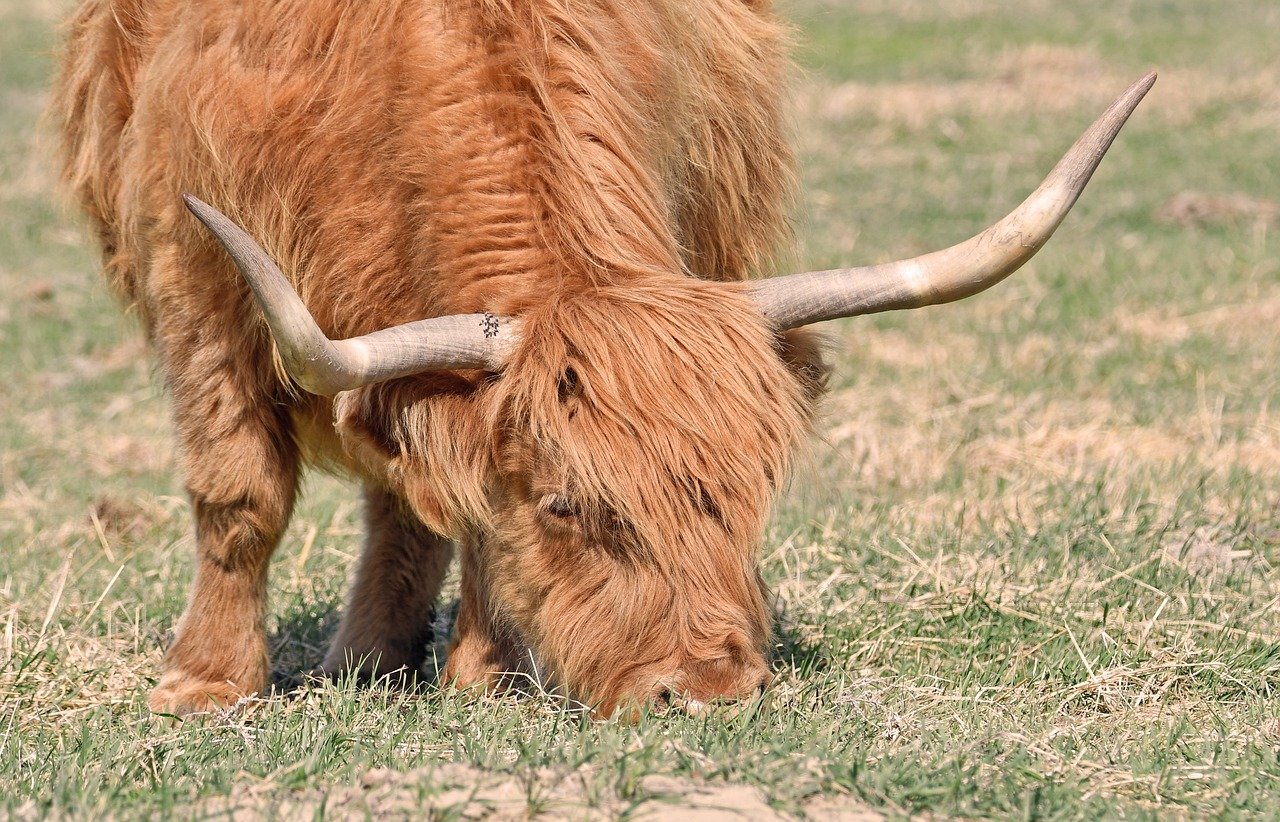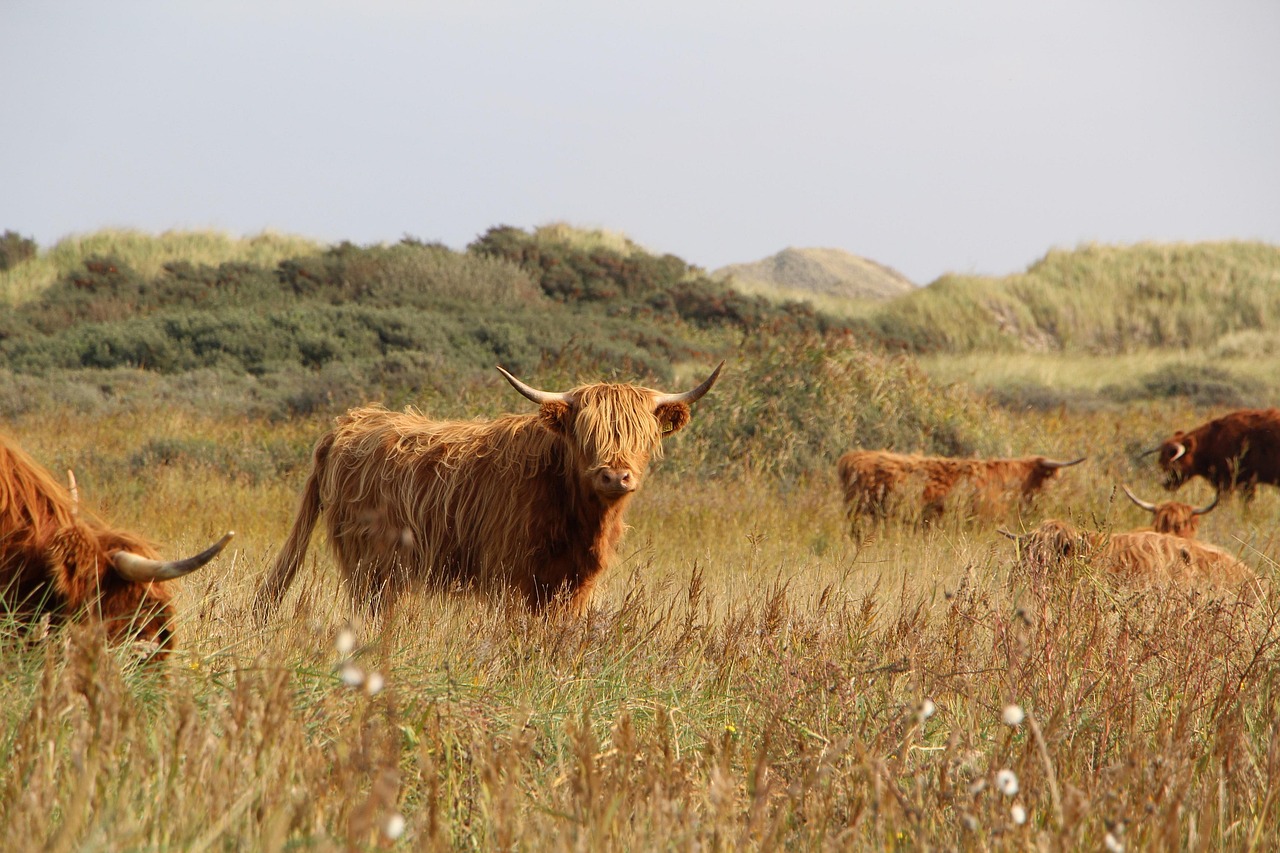Highland Cow Fact File
| Site: | Discovery and Learning |
| Course: | Highland Cows |
| Book: | Highland Cow Fact File |
| Printed by: | Guest user |
| Date: | Tuesday, 4 November 2025, 12:12 PM |
Meet Our Cows
We have two Highland cows here at Edinburgh Zoo- Thistle with a red coat and Nessie with a black coat.
They were both born at the start of 2023 and have been raised here in Scotland before joining us at the zoo in September 2025.

Where do Highland cows live?
Highland cows are one of Scotland's native species, originally from the Highlands, but now spread throughout the country!
And they didn't stop there- Highland cows have been exported to many other countries including Australia, Canada, Austria, Denmark, and more!
These hardy animals are usually found in herds across grasslands or mountainous regions and are adapted to withstand the harsh weather conditions common to the Scottish Highlands.

How are Highland cows adapted?
Click on the Highland cow to find out how they are adapted!
What do Highland cows eat?
Highland cows are herbivores, meaning they eat plants. They are called grazers because they typically eat low-growing vegetation and they don't eat the whole plant, allowing it to re-grow. Their diet usually consists of grasses, shrubs, and other tough plants. They are able to survive in conditions with sparse and poor-quality vegetation where other species wouldn't survive.

The value of hairy coos
Across the countries they inhabit, Highland cows are popular among farmers, particularly for their beef. Because of their long coats to keep them warm and their typically lower levels of grazing, Highland cows produce lean and tender beef. They can also be farmed for their milk, although this tends to have a much higher butterfat content compared to other cows' milk and they produce a smaller quantity of it!
Highland cows are also a staple figure in Scottish culture and history. In the past, Highland cows have been an indication of wealth and power in Scottish clans. Throughout time, they have remained a symbol of the resilience of Highlanders against the harsh conditions they experience. In modern times, their cute appearance and docile nature has made them a beloved icon of Scotland and they play an important role in tourism to Scotland.
They have also contributed to conservation efforts through sustainable grazing. Highland cows are an ideal candidate because of the flexibility and versatility of their diet, along with the fact that they're lighter than other cow breeds so cause less damage to land. They also help maintain a stable ecosystem as they can eat invasive species of plants that other cows cannot and in the spring they eat the shoots of weeds that would otherwise need to be controlled by farmers.
